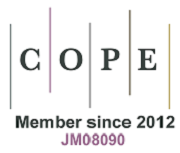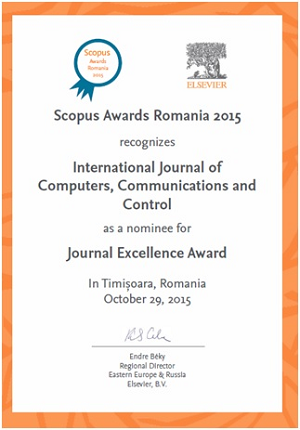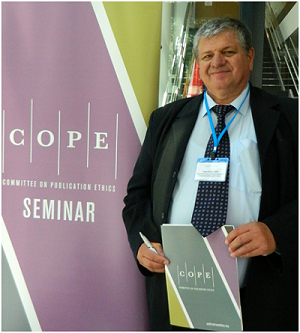Simulation Experiments for Improving the Consistency Ratio of Reciprocal Matrices
Keywords:
Reciprocal random matrix, Consistency ratio, induced bias matrix, simulation experiment, analytic hierarchy process (AHP)/analytic network process (ANP)Abstract
The consistency issue is one of the hot research topics in the analytic
hierarchy process (AHP) and analytic network process (ANP). To identify the most
inconsistent elements for improving the consistency ratio of a reciprocal pairwise
comparison matrix (PCM), a bias matrix can be induced to efficiently identify the
most inconsistent elements, which is only based on the original PCM. The goal of this
paper is to conduct simulation experiments by randomly generating millions numbers
of reciprocal matrices with different orders in order to validate the effectiveness of
the induced bias matrix model. The experimental results show that the consistency
ratios of most of the random inconsistent matrices can be improved by the induced
bias matrix model, few random inconsistent matrices with high orders failed the
consistency adjustment.
References
Thurstone, L. (1927), A law of comparative judgment, Psychological review, 34(4): 273-273. http://dx.doi.org/10.1037/h0070288
Saaty, T. L. 1986. Axiomatic Foundation of the Analytic Hierarchy Process, Management Science 32(7): 841-855. http://dx.doi.org/10.1287/mnsc.32.7.841
Saaty, T. L. (1994), How to Make a Decision: The Analytic Hierarchy Process, Interfaces, 24: 19-43. http://dx.doi.org/10.1287/inte.24.6.19
Siraj, S.; Mikhailov, L.; Keane, J. (2012), A heuristic method to rectify intransitive judgments in pairwise comparison matrices, European Journal of Operational Research, 216: 420-428. http://dx.doi.org/10.1016/j.ejor.2011.07.034
Kou, G., Ergu,D., Shang,J. (2014). Enhancing Data Consistency in Decision Matrix: Adapting Hadamard Model to Mitigate Judgment Contradiction, European Journal of Operational Research, 236(1):261-271. http://dx.doi.org/10.1016/j.ejor.2013.11.035
Saaty, T. L. (1980), The Analytical Hierarchy Process, New York: McGraw-Hill.
Saaty, T. L. (2003). Decision-making with the AHP: Why is the principal eigenvector necessary, European Journal of Operational Research, 145(1): 85-91. http://dx.doi.org/10.1016/S0377-2217(02)00227-8
Ergu, D.; Kou, G.; Peng, Y.; Shi, Y. (2011). A Simple Method to Improve the Consistency Ratio of the Pair-wise Comparison Matrix in ANP, European Journal of Operational Research, 213(1): 246-259. http://dx.doi.org/10.1016/j.ejor.2011.03.014
Harker, P. T. 1987. Derivatives of the Perron root of a positive reciprocal matrix: With applications to the analytic hierarchy process, Applied Mathematics and Computation, 22: 217-232. http://dx.doi.org/10.1016/0096-3003(87)90043-9
Xu, Z., Wei, C. (1999),A consistency improving method in the analytic hierarchy process, European Journal of Operational Research, 116: 443-449. http://dx.doi.org/10.1016/S0377-2217(98)00109-X
Cao, D., Leung, L. C., Law, J. S. (2008). Modifying inconsistent comparison matrix in analytic hierarchy process: A heuristic approach, Decision Support Systems, 44: 944-953. http://dx.doi.org/10.1016/j.dss.2007.11.002
Choo, E., Wedley, W. (2004). A common framework for deriving preference values from pairwise comparison matrices, Computer and Operations Research, 31 (6): 893-908. http://dx.doi.org/10.1016/S0305-0548(03)00042-X
Lin, C. (2007). A revised framework for deriving preference values from pairwise comparison matrices, European Journal of Operational Research, 176 (2): 1145-1150. http://dx.doi.org/10.1016/j.ejor.2005.09.022
Kou,G, Lin,C. (2014). A cosine maximization method for the priority vector derivation in AHP, European Journal of Operational Research, 235:225-232. http://dx.doi.org/10.1016/j.ejor.2013.10.019
Published
Issue
Section
License
ONLINE OPEN ACCES: Acces to full text of each article and each issue are allowed for free in respect of Attribution-NonCommercial 4.0 International (CC BY-NC 4.0.
You are free to:
-Share: copy and redistribute the material in any medium or format;
-Adapt: remix, transform, and build upon the material.
The licensor cannot revoke these freedoms as long as you follow the license terms.
DISCLAIMER: The author(s) of each article appearing in International Journal of Computers Communications & Control is/are solely responsible for the content thereof; the publication of an article shall not constitute or be deemed to constitute any representation by the Editors or Agora University Press that the data presented therein are original, correct or sufficient to support the conclusions reached or that the experiment design or methodology is adequate.







